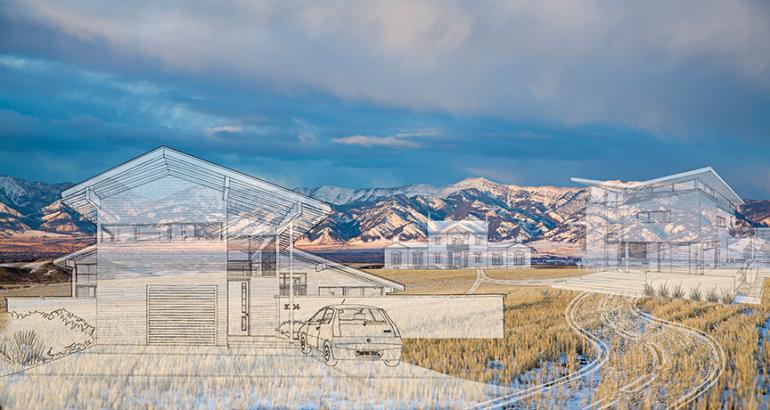Spread In
The benefits of town-centered development.
What Bozeman recreationist hasn’t biked down her favorite rural road, savoring the unobstructed Big Sky views, only to come around a corner and find a new trophy home plopped down in the middle of a once-scenic meadow? Or returned to his whitetail blind and noticed that there are now houses dangerously close to the traditional line of fire? Or boated a once-awesome stretch of local river now punctuated with overhanging decks rather than stately cottonwoods? Clearly growth, and more importantly, where we grow, impacts the quality of our outdoor recreation, and we need to do a better job of planning for it and managing it if we are to protect the things that we cherish most about this place.
Gallatin County has finally reached a population of 100,000. It took us 150 years to reach this milestone, but if we continue to grow at the same rate we have for the past couple of decades, in ten years we’ll add over 30,000 people to the valley. By 2040, we’ll reach 200,000.
There’s not much we can do about that—people will keep coming here for the outdoor lifestyle this place offers. But we can decide where we grow by prudent, responsible community planning. And where we grow will largely determine the outdoor experience we enjoy.
How growth patterns affect hunting is a great case in point. John Vore, game management bureau chief of Montana Fish Wildlife & Parks, who authored the study Big-Game Winter Range Recommendations for Subdivision Development in Montana: Justification and Rationale, stated that “By far the greatest and most significant threat to big-game winter range is development. Subdivisions and housing development have long been recognized as the primary threat to wildlife in western Montana. In 1998 the Montana Chapter of the Wildlife Society identified subdivisions and land use as the number one issue facing Montana wildlife in the near future.” And that was 1998.
FWP has created subdivision-design recommendations for mitigating the impact on wildlife from rural homes, and that’s a crucial step. But subdivision design can only go so far. According to Bozeman wildlife biologist Brent Brock, we should keep in mind two crucial concepts regarding growth and wildlife: where we live on the landscape, and how we live on the landscape. As he puts it, “It’s easier to plan for where we live on the landscape than how we live on the landscape once subdivisions are there.”
So here’s the thing: in order to maintain healthy wild game populations—and with them our hunting opportunities—we need to attract more of our growth to the Gallatin Valley’s cities and towns. For the first 125 years of the county’s existence, most growth happened in towns, in traditional, town-sized lots. In 1970, 70% of Gallatin County’s population lived in its five cities. But for the next 30 or so years, the county’s rural population grew at more than twice the rate of the urban population. The result? We’re spreading out farther into the countryside than we ever have before, and the numbers bear it out. While the population of Gallatin County has doubled in the past 25 years, the amount of land developed for homes has nearly quadrupled. Rural residential lots, on average, require much more land than city ones (the average house lot in rural Gallatin Valley would occupy more than a city block). Given that in the next 10 years we’ll need about 13,000 homes, it becomes clear that where we grow will make all the difference.
That doesn’t have to mean that all future growth should occur in town—there will always be a market for rural homes. But we need to quit making it easier and cheaper to build in rural areas. We need to decide once and for all where we want to grow, and then build the roads and other infrastructure in those places.
So what can we, as individuals, do? First off, consider living in town if you don’t now. Probably many of you, like me, have dreamed of emulating Thoreau by living out by the Gallatin Valley version of Walden Pond. Once I started looking at our growth patterns, I realized that it’s just not sustainable. And the many benefits of living in town eclipsed that desire anyway. Secondly, spend just a bit less time recreating and a bit more time getting involved in the future of the Gallatin Valley (or Paradise Valley or the Jefferson Valley). It’s very easy, really—our population is still relatively small and an active group of folks can have an outsize impact on local policies. Just putting in a fraction of the amount of time we devote to outdoor pursuits into advocating for sound planning will ensure that these recreational opportunities remain a hallmark of our Gallatin home.
Randy Carpenter is a community planner for Future West in Bozeman.











